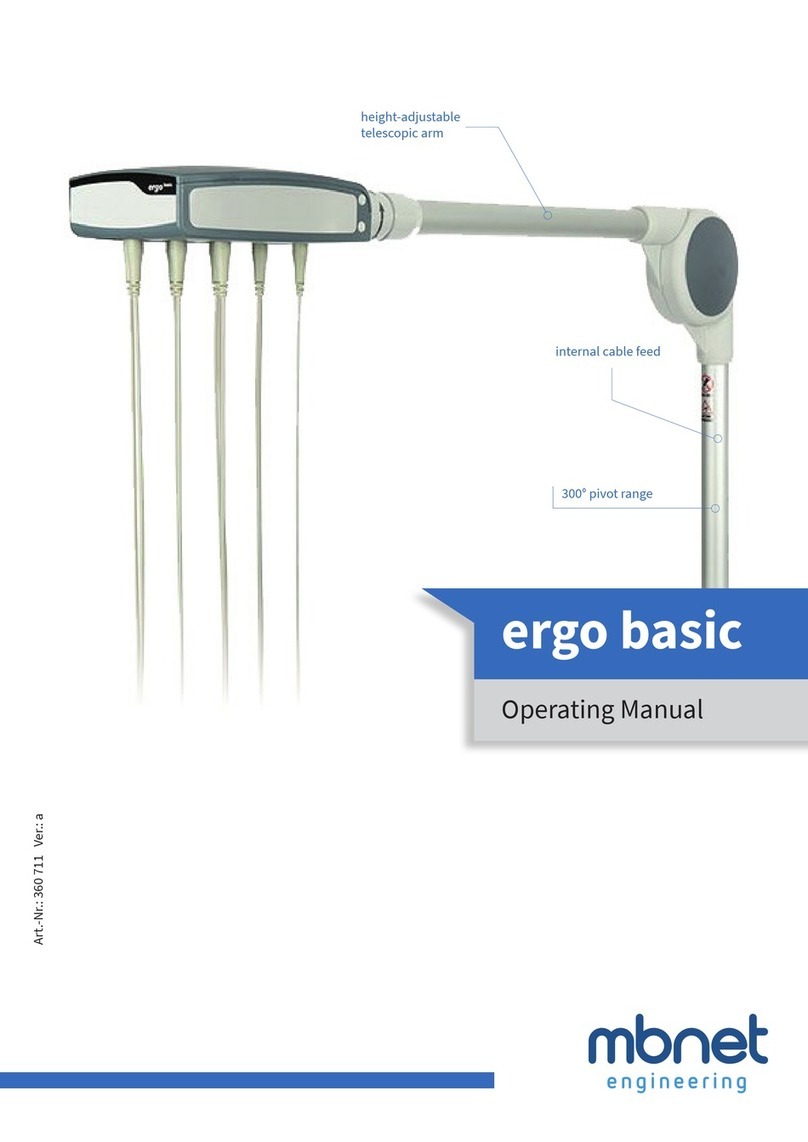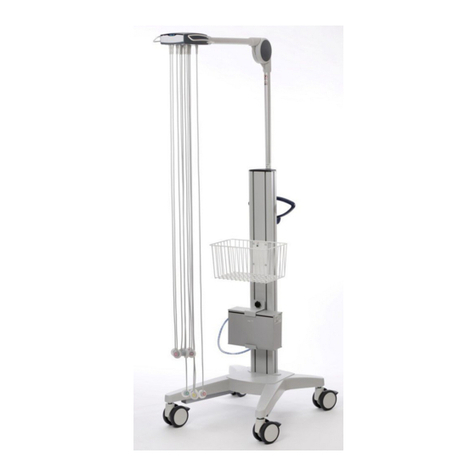
ergo vac
User guide
Table of Contents
1 Safety Notes ................................................................... 4
1.1 Responsibility of the User .............................................. 4
1.2 Organisational Measures................................................. 4
1.3 Indications for Use .......................................................... 4
1.4 Contra-indication ............................................................ 4
1.5 Safety-conscious Operation .......................................... 5
1.6 Safe Use with Electronics .............................................. 5
1.7 Operation with other Devices ..........................................5
1.8 Maintenance ................................................................... 5
1.9 Terms of Warranty .......................................................... 6
1.10 Symbols and Pictograms ................................................ 6
1.10.1 Symbols Used in this Document ...................................... 6
1.10.2 Symbols Used on the Device............................................ 7
2 Introduction .................................................................... 8
2.1 Elements of the Suction Device ...................................... 8
2.1.1 Overview ......................................................................... 8
2.1.2 Scope of Delivery ............................................................. 9
2.2 Control Box with Control Panel ...................................... 9
2.3 Suction Electrode Leads ................................................ 9
2.4 Cable Arm ..................................................................... 10
2.5 Pump Module ............................................................... 10
2.6 Fixation Pump Module ................................................. 11
2.7 Serial Number .............................................................. 11
2.8 Supplied accessories ................................................... 11
3 Operation ..................................................................... 12
3.1 Getting Started ............................................................. 12
3.2 On / Off .......................................................................... 12
3.3 Power Supply................................................................ 13
3.3.1 Displays for Mains or Battery Power .............................. 13
3.3.2 Isolation from Power Grid .............................................. 13
4 Controls ........................................................................ 13
4.1 Suction Levels .............................................................. 14
4.2 Blowing out Air ............................................................. 14
4.3 Cleaning ....................................................................... 14
5 ECG Recording ............................................................14
5.1 Placement of Electrodes ......................................... 14/15
5.2 Possible Sources of Errors with the ECG Recording ... 15
5.2.1 Preparation..................................................................... 15
5.2.2 Application of Electrodes................................................ 15
5.2.3 Before the Recording ..................................................... 16
5.2.4 During the Recording ..................................................... 16
5.2.5 Removal of Electrodes from the Skin ............................. 16
5.3 Electrode Identification and Colour Code ................... 16
5.4 Resting ECG with 10-lead Patient Cable
Electrode Placement for Standard Leads .................... 17
5.5 Right Precordial (C4r) ................................................... 18
6 Application .................................................................... 19
6.1 Operating Conditions ................................................... 19
6.2 Starting a Recording .................................................... 19
7 Maintenance and Care ................................................. 20
7.1 Visual Inspection ........................................................... 20
7.2 Cleaning the Housing and Cables................................. 21
7.2.1 Cleaning and Storing the Electrodes............................... 22
7.2.2 Recommended Cleaning and
Disinfection Methods for Electrodes ........................ 23 - 27
7.2.3 Cleaning the Suction Hoses ........................................... 28
7.2.4 Cleaning Connection Cables .......................................... 28
7.2.5 Admissible Disinfectants................................................. 28
7.2.6 Non-admissible Detergents ............................................ 28
7.3 Disinfection.................................................................... 29
7.3.1 Admissible Disinfectants................................................. 29
7.3.2 Non-admissible Disinfectants ......................................... 29
7.4 Battery .......................................................................... 29
7.4.1 Charging the Battery ...................................................... 29
7.4.2 Battery Disposal ............................................................. 30
7.5 Inspection Report ......................................................... 30
Replacement of Parts with a Limited Life,
every 3 – 5 years ............................................................ 31
7.6 Accessories and consumables ....................................... 31
7.7 Replacement of ECG Leads ........................................... 32
8 Troubleshooting ............................................................ 32
8.1 Possible Errors ............................................................. 32
8.2 Preventing Electromagnetic Interference ................ 32/33
8.3 Warranty ....................................................................... 34
8.4 Accessories and Disposables ...................................... 34
9 Technical Data .............................................................. 34
9.1 Pump Module ............................................................... 34
9.2 Preventing Electromagnetic Interference ..................... 35
9.3 System Cable ............................................................... 35
9.4 Electrodes .................................................................... 35
9.5 Cable Arm .................................................................... 35
9.6 Safety Standards .......................................................... 35
10 EMC information ........................................................... 36
10.1 Table1: Immunity (all devices):
electromagnetic emissions ........................................... 37
10.2 Table 2: Immunity: electromagnetic immunity............... 38
10.3 Table 3: electromagnetic immunity ............................... 39





























